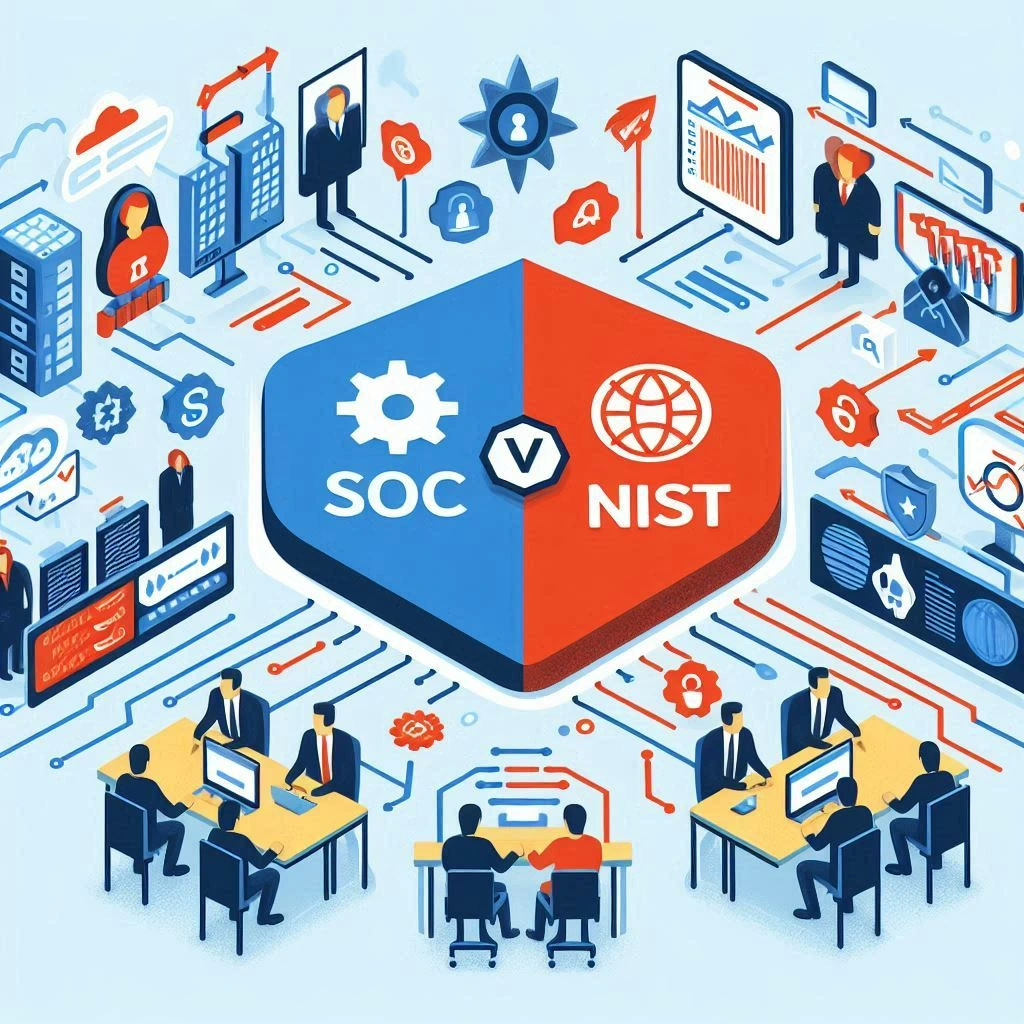Introduction to Positive Internal Control
The concept of positive internal control plays a pivotal role in ensuring that organizations operate efficiently, comply with regulations, and safeguard their assets. Positive internal controls are proactive measures designed to prevent errors, fraud, and inefficiencies, thereby fostering a culture of accountability and transparency within an organization. This section will define positive internal control, highlight its significance in organizational risk management, and explore its broader implications for compliance and operational efficiency.
Definition of Positive Internal Control
Positive internal control refers to a set of processes and procedures implemented by an organization to ensure the integrity of its financial and operational activities. These controls are designed not only to detect and mitigate risks but also to promote ethical behavior and compliance with laws and regulations. Unlike reactive controls, which address issues after they occur, positive internal controls focus on preventing problems before they arise, thereby enhancing the overall governance framework of the organization[1].
Importance of Internal Controls in Safeguarding Assets
One of the primary functions of positive internal controls is to safeguard an organization’s assets. By establishing robust control mechanisms, organizations can protect their physical and financial resources from theft, misuse, or misappropriation. For instance, implementing segregation of duties ensures that no single individual has control over all aspects of a financial transaction, thereby reducing the risk of fraud[2]. Additionally, regular audits and reconciliations serve as checks to verify that assets are accounted for and that discrepancies are promptly addressed. This proactive approach not only protects assets but also instills confidence among stakeholders regarding the organization’s commitment to ethical practices and financial integrity[3].
Impact of Effective Internal Controls on Compliance and Operational Efficiency
Effective positive internal controls significantly enhance an organization’s compliance with regulatory requirements. By establishing clear policies and procedures, organizations can ensure that employees understand their responsibilities and the importance of adhering to legal and regulatory standards. This clarity reduces the likelihood of non-compliance, which can lead to costly penalties and damage to the organization’s reputation[4].
Moreover, positive internal controls contribute to operational efficiency by streamlining processes and reducing redundancies. For example, automated controls can facilitate faster transaction processing and reporting, allowing organizations to respond more swiftly to market changes and operational challenges. This efficiency not only improves productivity but also enables organizations to allocate resources more effectively, ultimately driving better business outcomes[5].
The Role of Internal Audit in Positive Internal Control
Internal controls serve as a critical framework for ensuring operational efficiency, compliance with laws and regulations, and the reliability of financial reporting. Positive internal controls not only mitigate risks but also foster a culture of accountability and transparency. Internal audit teams play a pivotal role in establishing, assessing, and enhancing these controls. This section outlines the responsibilities of internal audit teams in supporting and improving positive internal controls within organizations.
Assessing Existing Controls
One of the primary responsibilities of internal audit teams is to assess the effectiveness of existing internal controls. This involves a systematic evaluation of the control environment to determine whether the controls in place are adequate and functioning as intended. Internal auditors utilize various methodologies, including risk assessments, control testing, and compliance reviews, to identify weaknesses or gaps in the current control framework[1].
By conducting thorough assessments, internal auditors can provide valuable insights into the effectiveness of controls and recommend necessary improvements. This process not only helps in identifying areas of risk but also ensures that the organization is aligned with best practices and regulatory requirements[2]. Furthermore, internal auditors can benchmark the organization’s controls against industry standards, providing a comparative analysis that can guide enhancements[3].
Collaboration Between Internal Auditors and Management
Effective positive internal control is not solely the responsibility of the internal audit team; it requires a collaborative approach involving management at all levels. Internal auditors must work closely with management to understand the operational processes and the specific risks associated with them. This collaboration is essential for developing controls that are not only effective but also practical and tailored to the organization’s unique context[4].
Regular communication between internal auditors and management fosters a culture of transparency and trust, which is vital for the successful implementation of internal controls. By engaging management in the audit process, internal auditors can ensure that their recommendations are understood and supported, leading to more effective implementation of control measures[5]. Additionally, this partnership can facilitate the identification of emerging risks and the timely adjustment of controls to address them.
Continuous Monitoring and Improvement of Internal Control Processes
The landscape of risks and regulations is constantly evolving, making it imperative for organizations to adopt a proactive approach to internal controls. Internal audit teams are instrumental in establishing a framework for continuous monitoring of internal control processes. This involves regularly reviewing and testing controls to ensure they remain effective and relevant in the face of changing circumstances[6].
Continuous monitoring allows internal auditors to identify control deficiencies in real-time, enabling prompt corrective actions. Moreover, it supports a culture of continuous improvement, where feedback from audits can be used to refine and enhance control processes over time. Internal auditors can leverage technology, such as data analytics and automated monitoring tools, to enhance their oversight capabilities and provide deeper insights into control performance[7].
Key Components of Positive Internal Control
Establishing a robust positive internal control system is essential for organizations aiming to enhance their operational efficiency, safeguard assets, and ensure compliance with regulations. Positive internal controls not only help in mitigating risks but also foster a culture of accountability and transparency. Below are the key components that form the foundation of an effective positive internal control system.
Control Environment: Setting the Tone at the Top
The control environment is the bedrock of any internal control system. It encompasses the organizational culture, values, and governance structures that influence how control activities are conducted. A strong control environment is characterized by:
- Leadership Commitment: Senior management must demonstrate a commitment to ethical behavior and integrity, which sets a positive example for all employees. This commitment should be reflected in the organization’s policies and practices.
- Clear Organizational Structure: A well-defined organizational structure with clear roles and responsibilities helps ensure that everyone understands their part in maintaining internal controls.
- Employee Engagement: Encouraging a culture where employees feel empowered to report concerns and suggest improvements can significantly enhance the effectiveness of internal controls[1].
Risk Assessment: Identifying and Analyzing Risks
Effective risk assessment is crucial for identifying potential threats that could hinder the achievement of organizational objectives. This process involves:
- Risk Identification: Regularly identifying risks related to operations, financial reporting, and compliance. This can be achieved through workshops, surveys, and interviews with key stakeholders.
- Risk Analysis: Evaluating the likelihood and impact of identified risks to prioritize them effectively. This analysis helps in determining which risks require immediate attention and which can be monitored over time[2].
- Continuous Review: The risk landscape is dynamic; therefore, organizations should continuously review and update their risk assessments to adapt to new challenges and changes in the business environment[3].
Control Activities: Policies and Procedures to Mitigate Risks
Control activities are the specific policies and procedures that help mitigate identified risks. These activities should be designed to ensure that management directives are carried out effectively. Key aspects include:
- Segregation of Duties: Dividing responsibilities among different individuals to reduce the risk of error or fraud. For example, the person responsible for authorizing transactions should not also be responsible for recording them.
- Authorization and Approval Processes: Establishing clear procedures for approving transactions and activities ensures that only authorized personnel can execute significant actions within the organization.
- Regular Reconciliations: Conducting regular reconciliations of accounts and transactions helps identify discrepancies early, allowing for timely corrective actions[4].
Information and Communication: Ensuring Relevant Information Flows
Effective internal controls rely on the timely and accurate flow of information throughout the organization. This component involves:
- Information Systems: Implementing robust information systems that facilitate the collection, processing, and dissemination of relevant data. These systems should support decision-making and enhance transparency.
- Communication Channels: Establishing clear communication channels ensures that employees at all levels are aware of their responsibilities regarding internal controls and can report issues or concerns without fear of retaliation.
- Training and Awareness: Regular training sessions on internal control policies and procedures help ensure that all employees understand their roles in maintaining a strong control environment[5].
Monitoring: Ongoing Assessments of Control Efficacy
Monitoring is essential for ensuring that internal controls remain effective over time. This involves:
- Regular Audits: Conducting internal audits to assess the effectiveness of control activities and identify areas for improvement. These audits should be systematic and cover all aspects of the internal control system.
- Performance Metrics: Establishing key performance indicators (KPIs) to measure the effectiveness of internal controls. Regularly reviewing these metrics helps organizations identify trends and areas needing attention.
- Feedback Mechanisms: Implementing feedback mechanisms allows employees to report on the effectiveness of controls and suggest improvements, fostering a culture of continuous improvement[6].
Best Practices for Implementing Positive Internal Control
Establishing effective positive internal controls is crucial for organizations aiming to enhance their operational efficiency, mitigate risks, and ensure compliance with regulations. Positive internal controls not only safeguard assets but also promote a culture of accountability and transparency. Below are actionable strategies that internal audit teams and managers can implement to create a robust internal control environment.
1. Develop a Comprehensive Internal Control Framework
A well-structured internal control framework serves as the foundation for all control activities within an organization. This framework should align with the organization’s objectives and risk management strategies. Key components to consider include:
- Control Environment: Establish a strong ethical culture and governance structure that emphasizes integrity and accountability.
- Risk Assessment: Identify and analyze risks that could impede the achievement of objectives, ensuring that controls are tailored to address these risks effectively.
- Control Activities: Implement specific policies and procedures that mitigate identified risks, including segregation of duties, authorization processes, and physical controls over assets.
By developing a comprehensive framework, organizations can ensure that their internal controls are not only effective but also adaptable to changing circumstances and risks[1].
2. Engage Stakeholders at All Levels for Buy-In and Support
Successful implementation of internal controls requires the involvement and commitment of stakeholders across the organization. Engaging employees, management, and the board of directors fosters a sense of ownership and accountability. Strategies to enhance stakeholder engagement include:
- Communication: Clearly articulate the importance of internal controls and how they contribute to the organization’s success.
- Involvement: Involve stakeholders in the design and implementation of controls to ensure they are practical and relevant to their specific roles.
- Feedback Mechanisms: Establish channels for stakeholders to provide feedback on the effectiveness of controls, allowing for continuous improvement.
By fostering a collaborative environment, organizations can enhance the effectiveness of their internal controls and ensure that they are embraced at all levels[2].
3. Implement Clear Documentation and Communication Channels
Effective documentation and communication are vital for the success of internal controls. Organizations should establish clear procedures for documenting control activities, policies, and responsibilities. This includes:
- Control Manuals: Create comprehensive manuals that outline control processes, responsibilities, and procedures.
- Regular Updates: Ensure that documentation is regularly reviewed and updated to reflect changes in processes or regulations.
- Communication Plans: Develop communication strategies to disseminate information about internal controls, including training sessions and newsletters.
Clear documentation and communication help ensure that all employees understand their roles in the internal control process, reducing the likelihood of errors and enhancing compliance[3].
4. Utilize Technology and Tools for Monitoring and Reporting
Leveraging technology can significantly enhance the effectiveness of internal controls. Organizations should consider implementing tools that facilitate monitoring, reporting, and data analysis. Key technologies to explore include:
- Automated Monitoring Systems: Use software solutions that provide real-time monitoring of transactions and controls, allowing for immediate detection of anomalies.
- Data Analytics: Employ data analytics tools to identify trends and patterns that may indicate control weaknesses or areas for improvement.
- Reporting Dashboards: Create dashboards that provide stakeholders with insights into the effectiveness of internal controls, enabling informed decision-making.
By utilizing technology, organizations can streamline their internal control processes and enhance their ability to respond to emerging risks[4].
5. Provide Training and Awareness Programs for Employees
Training and awareness are essential components of a successful internal control environment. Organizations should implement ongoing training programs to educate employees about the importance of internal controls and their specific responsibilities. Consider the following approaches:
- Onboarding Programs: Integrate internal control training into the onboarding process for new employees to instill a culture of compliance from the outset.
- Regular Workshops: Conduct periodic workshops and refresher courses to keep employees informed about updates to internal controls and best practices.
- Awareness Campaigns: Launch campaigns that highlight the significance of internal controls and encourage employees to report potential issues or concerns.
By investing in training and awareness, organizations can empower employees to take an active role in maintaining effective internal controls, ultimately strengthening the overall control environment[5].
Common Challenges in Positive Internal Control Implementation
Implementing positive internal controls is essential for organizations aiming to enhance their operational efficiency, ensure compliance, and mitigate risks. However, the journey toward establishing effective internal controls is often fraught with challenges. Understanding these obstacles can help internal audit teams and managers devise strategies to overcome them. Below are some of the most common challenges faced during the implementation of positive internal controls.
Resistance to Change from Employees
One of the most significant hurdles in implementing positive internal controls is the resistance to change exhibited by employees. Change can be daunting, especially when it disrupts established routines and workflows. Employees may feel threatened by new processes or fear that increased oversight will lead to micromanagement. This resistance can manifest in various ways, including reluctance to adopt new technologies, pushback against revised procedures, or even passive non-compliance.
To address this challenge, organizations should focus on change management strategies. This includes engaging employees early in the process, providing comprehensive training, and clearly communicating the benefits of the new controls. By fostering a culture of transparency and collaboration, organizations can reduce resistance and encourage buy-in from all levels of staff[1].
Inadequate Resources and Budget Constraints
Another common challenge is the lack of adequate resources and budget constraints. Implementing effective internal controls often requires investment in technology, training, and personnel. However, many organizations operate under tight budgets, which can limit their ability to allocate necessary resources for internal control initiatives. This can lead to poorly designed controls that do not effectively mitigate risks or achieve compliance objectives.
To overcome this obstacle, organizations should prioritize their internal control initiatives based on risk assessments. By identifying the most critical areas that require attention, organizations can allocate resources more effectively. Additionally, seeking out cost-effective solutions, such as leveraging existing technologies or utilizing cross-training among staff, can help maximize the impact of limited resources[2].
Complexity of Organizational Structure and Processes
The complexity of an organization’s structure and processes can also pose significant challenges to the implementation of positive internal controls. Large organizations, in particular, may have multiple departments, divisions, and geographic locations, each with its own set of processes and controls. This complexity can make it difficult to establish uniform controls that are effective across the entire organization.
To navigate this challenge, organizations should adopt a holistic approach to internal controls. This involves conducting a thorough analysis of existing processes and identifying areas where controls can be standardized or streamlined. Additionally, fostering interdepartmental communication and collaboration can help ensure that controls are effectively integrated across the organization, reducing the risk of gaps or overlaps in control measures[3].
Difficulty in Measuring Effectiveness of Controls
Finally, measuring the effectiveness of internal controls can be a daunting task. Organizations often struggle to establish clear metrics and benchmarks to evaluate the performance of their controls. Without effective measurement, it becomes challenging to determine whether the controls are functioning as intended or if adjustments are necessary.
To address this issue, organizations should develop a robust framework for monitoring and evaluating internal controls. This includes defining key performance indicators (KPIs) that align with organizational objectives and regularly reviewing control performance against these metrics. Additionally, conducting periodic audits and assessments can provide valuable insights into the effectiveness of controls and highlight areas for improvement[4].
Conclusion
In today’s dynamic business environment, the implementation of positive internal controls is not just a regulatory requirement but a strategic necessity. Positive internal controls serve as the backbone of an organization’s risk management framework, ensuring that operations are efficient, financial reporting is reliable, and compliance with laws and regulations is maintained. By fostering a culture of accountability and transparency, organizations can significantly mitigate risks and enhance their overall performance.
Find out more about Shaun Stoltz https://www.shaunstoltz.com/about/
This post was written by an AI and reviewed/edited by a human.




Pingback: Building a Strong Foundation with Positive Internal Control - Times Of Economics
Pingback: Mastering Positive Internal Control: A Strategic Approach To Organizational Excellence And Risk Management